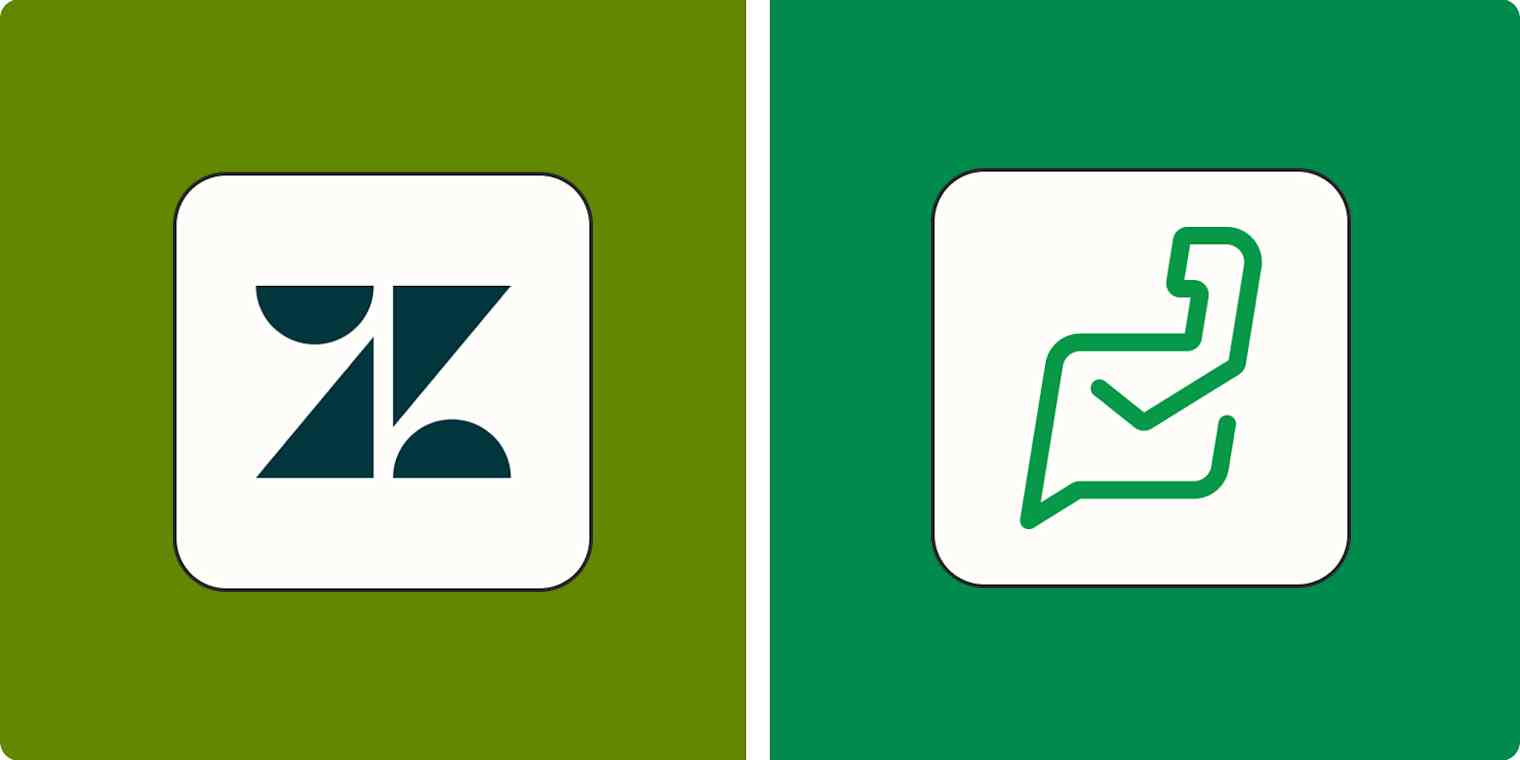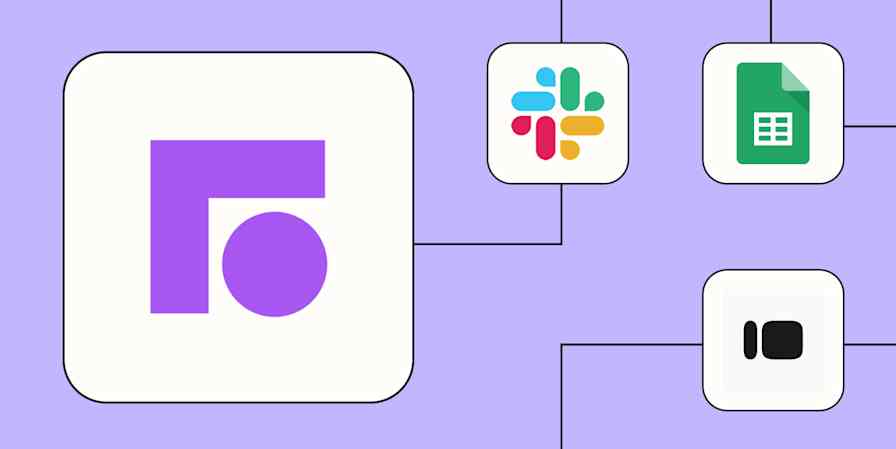Whether you're on the "assisting" or "being assisted" end of customer service, you know how painful a three-and-a-half-hour live chat about a software glitch that takes an entire SWAT team of reps to figure out can be. Nobody has time for that.
To save your organization resources (and your customers a headache), you need an intuitive customer service software that streamlines ticket management and—to put it bluntly—makes your agents not hate their jobs.
Zendesk for Service and Zoho Desk are two of the most popular customer service platforms on the market. I spent a lot of time testing both options to determine which is best for who, and based on that experience, here's my breakdown of Zendesk vs. Zoho.
Table of contents:
Zoho has a helpful AI, but Zendesk's AI is built for customer support
Zendesk has more integrations, but both integrate with Zapier
Zendesk vs. Zoho Desk at a glance
Both Zendesk and Zoho Desk offer valuable customer service tool features like ticketing, a knowledge base, a community forum, live chat, automations, macros (pre-saved actions), collaboration features, cross-platform support, and reporting options. Really, their starkest difference is in quality vs. price:
Zendesk is better equipped to serve organizations with a larger budget that need advanced reporting, a help center, and integration features.
Zoho is better positioned to serve organizations on a budget that are willing to overcome a learning curve to enjoy a solid customer service solution.
| Zendesk for Service | Zoho Desk |
|---|---|---|
Customization | ⭐⭐⭐⭐⭐ Highly customizable bots, help center, and reports | ⭐⭐⭐ Relatively minimal customization options for knowledge base and reports |
Integrations | ⭐⭐⭐⭐⭐ 1,900+ integrations; integrates with Zapier | ⭐⭐⭐⭐⭐ 1,000+ integrations; integrates with Zapier |
Automation | ⭐⭐⭐⭐ Ability to customize automated replies; offers chatbots | ⭐⭐⭐⭐ Ability to customize automated replies; chatbots available via Zoho SalesIQ |
User-friendliness | ⭐⭐⭐⭐⭐ Simple, user-friendly interface; built-in tutorial with helpful demo videos that make onboarding easy | ⭐⭐⭐ Cluttered, somewhat difficult-to-navigate interface, which makes onboarding difficult |
Help center | ⭐⭐⭐⭐⭐ Help center is highly customizable; can set permissions for moderators | ⭐⭐⭐ Knowledge base isn't very customizable but offers SEO features |
Price | ⭐⭐⭐⭐ Steeper price point than Zoho Desk (pricing below is for annual billing) Suite Team: $55/user/month Suite Growth: $89/user/month Suite Professional: $115/user/month Suite Enterprise: By request (There are small business plans with fewer features that start at $19/user/month) | ⭐⭐⭐⭐⭐ Much more affordable (pricing below is for annual billing) Express: $7/user/month Standard: $14/user/month Professional: $23/user/month Enterprise: $40/user/month |
Security | ⭐⭐⭐⭐⭐ Credit card number redaction; data encryption both at rest and in motion | ⭐⭐⭐⭐ GDPR compliance |
AI | ⭐⭐⭐⭐ Some AI features available on every plan; comprehensively supports human agents and offers accountability for AI agents | ⭐⭐⭐⭐ Zia, the conversational AI assistant, is available across the software; wide range of business intelligence tools available |
Zoho's suite of tools is much broader
An apples-to-apples comparison of Zendesk and Zoho isn't exactly fair. Zoho has a pretty massive suite of over 100 cloud-based tools that span categories like sales, marketing, HR, finance, security, project management, and—what we're here to talk about—customer service.
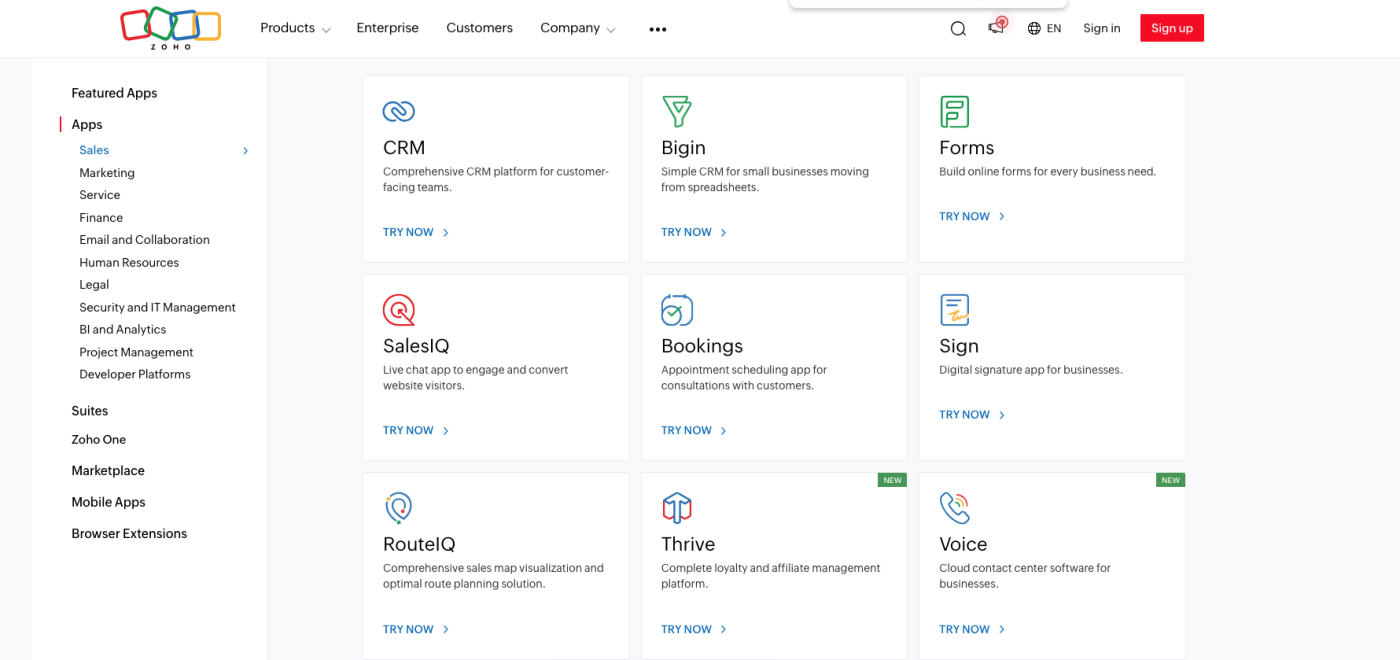
Zendesk, on the other hand, offers only a handful of focused tools, including Zendesk for customer service (a ticketing suite).
There are pros and cons to both approaches. A broad suite can boost productivity and streamline collaboration, as it requires fewer tools to integrate, but it may lack the deep functionality of specialized tools. A focused approach delivers deep expertise and tailored features but may face challenges when it comes to connecting those functions to other parts of the business.
Here, I'm comparing each company's customer service tools—Zoho Desk and Zendesk for customer service.
Zendesk is the more user-friendly option
When it comes to usability, Zendesk and Zoho Desk each have distinct bragging rights—but Zendesk provides a far better user experience.
Zendesk's setup tutorial experience is superb. It guided me through the platform's standard and advanced features, using a combination of pop-up boxes, previews, and even demo videos to help me find my way around the interface and know what's possible with the platform.
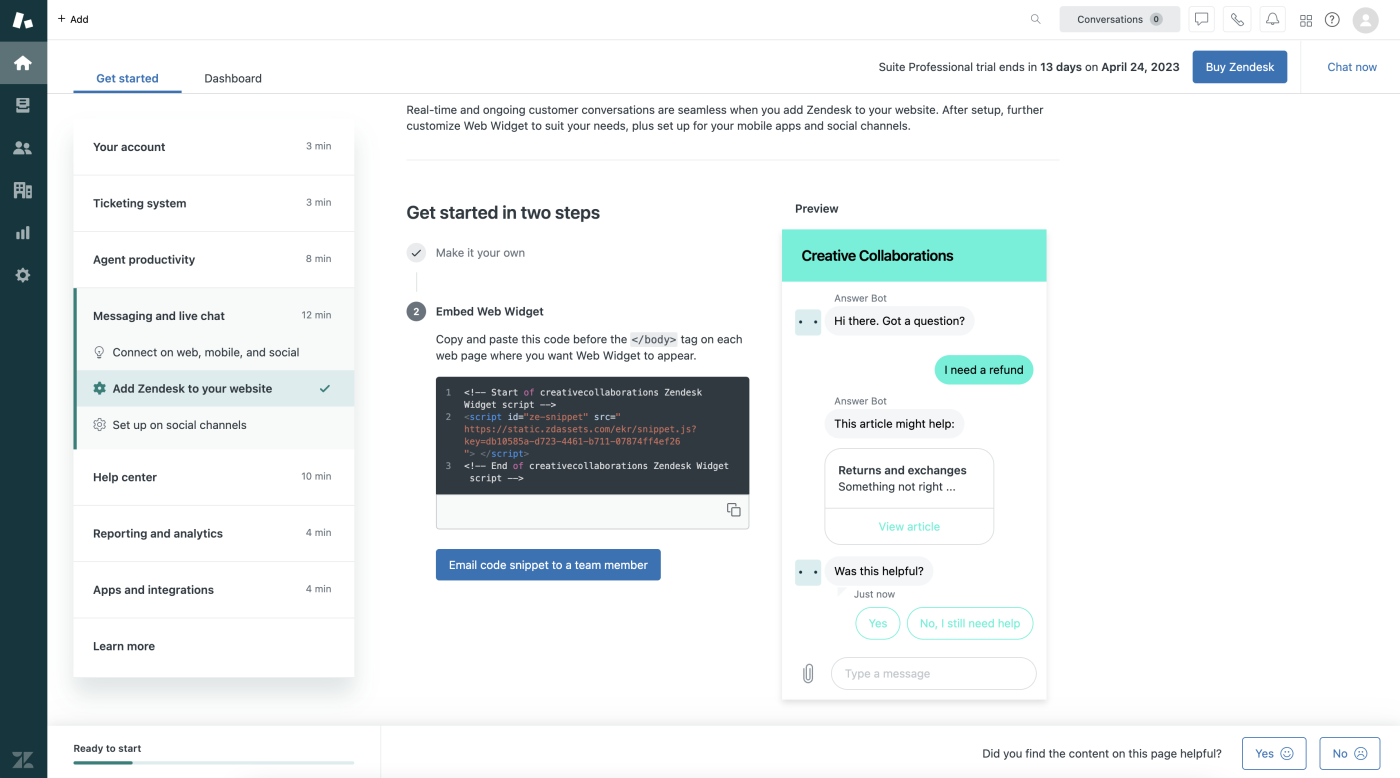
Plus, despite it having a lot of different features and views, Zendesk keeps everything clean and organized. Just navigate to the top bar to hop from the Support channel for agent ticket management to the Explore channel for reporting to the Talk channel for voice communication.

Zendesk also offers intuitive side-conversation features and a clear view of interaction history with customers to make your agents' lives easier.
My experience with Zoho Desk's busy interface, on the other hand, was quite different. When I opened my first ticket, the sheer number of options (many of which are represented by tiny icons and hyperlinks) made my eyes gloss over a bit.

When I navigated to the setup page to hunt for some helpful features and resources, the decision fatigue followed.

Ultimately, your team is far less likely to run into a learning curve with Zendesk, despite its advanced features.
Zoho has a helpful AI chatbot, but Zendesk has AI built specifically for customer support
At this point in the AI arms race, Zoho and Zendesk have both integrated artificial intelligence deeply into their platforms—with slightly different primary focuses. Zoho's AI provides general business intelligence across the whole suite of Zoho products. Zendesk's AI, on the other hand, is more focused on the customer support experience.
Zoho's AI-powered virtual assistant, called Zia, does far more than swing from a chandelier (sorry). In the wider Zoho ecosystem, Zia offers broad intelligence across the whole smorgasbord of Zoho applications to do everything from predictive insights to task automation. It enriches data, suggests sales strategies, and would probably even renovate your bathroom if left unsupervised.
Within Zoho Desk, though, my first question was, "Great, love Zia, now… where is it?"
To enable Zia's many features, you'll first have to dig through your CRM settings (which is a menu within Zoho Desk) and enable the AI. (Yes, it also struck me as odd that it's not enabled by default.)

Once you've done this, you can use Zia solo in Zoho Desk to automatically tag tickets, retrieve knowledge base answers, suggest agent answers based on support articles, flag unusual responses, enrich data, and even perform sentiment analysis to highlight customer emotions (essentially poking your shoulder and saying, "Hey human, I think the customer is mad").

For its part, Zendesk has made some big strides to catch up to competitors like Zoho in terms of AI—and then push the horizons further when it comes to support specifically.
Zendesk's AI is built around the idea of not only supporting customer service with AI but also providing a great deal of transparency into the AI's interactions with customers. Zendesk's goal, at least at face value, is to address that feeling customers get in the pit of their stomach when they make a call and get transferred from one AI to another. They want their AI agents to actually solve problems.

Zendesk's AI agents are engineered to autonomously resolve a significant portion of customer inquiries across various channels, providing immediate solutions and substantially reducing the workload on human agents. (There's even outcome-based pricing, so you're only charged when AI agents resolve issues on their own.) Zendesk also offers pre-built reports that track whether the AI agents are actually helping customers and resolving issues, so you can always see how much weight they're pulling.
For the human team, there's also AI Copilot, an AI-powered assistant designed to help out human support agents. This feature proactively offers valuable insights during customer interactions and suggests relevant and effective replies to expedite communication—very similar to Zoho's Zia.
Zendesk is more customizable as a standalone tool
While Zendesk and Zoho each offer ways to tailor their platforms to your every whim, Zendesk distinguishes itself with its user-friendly approach to customization—especially when it comes to help center features.
Zendesk's flexibility is reflected in just how many features you can customize. Take bots, for example. Using the AI agent tool, you can easily set up a custom bot complete with AI features like generative replies and distinct personas. You can even name them and set their avatars for a little boost of character.
Likewise, I was really impressed with how much Zendesk allows you to customize your help center—it almost felt like I was building a blog or a website. You can choose a theme, set a hero image, enable/disable features like recently viewed articles, and more. The easy customization here means you'll be able to adjust the platform as you scale or your needs evolve.
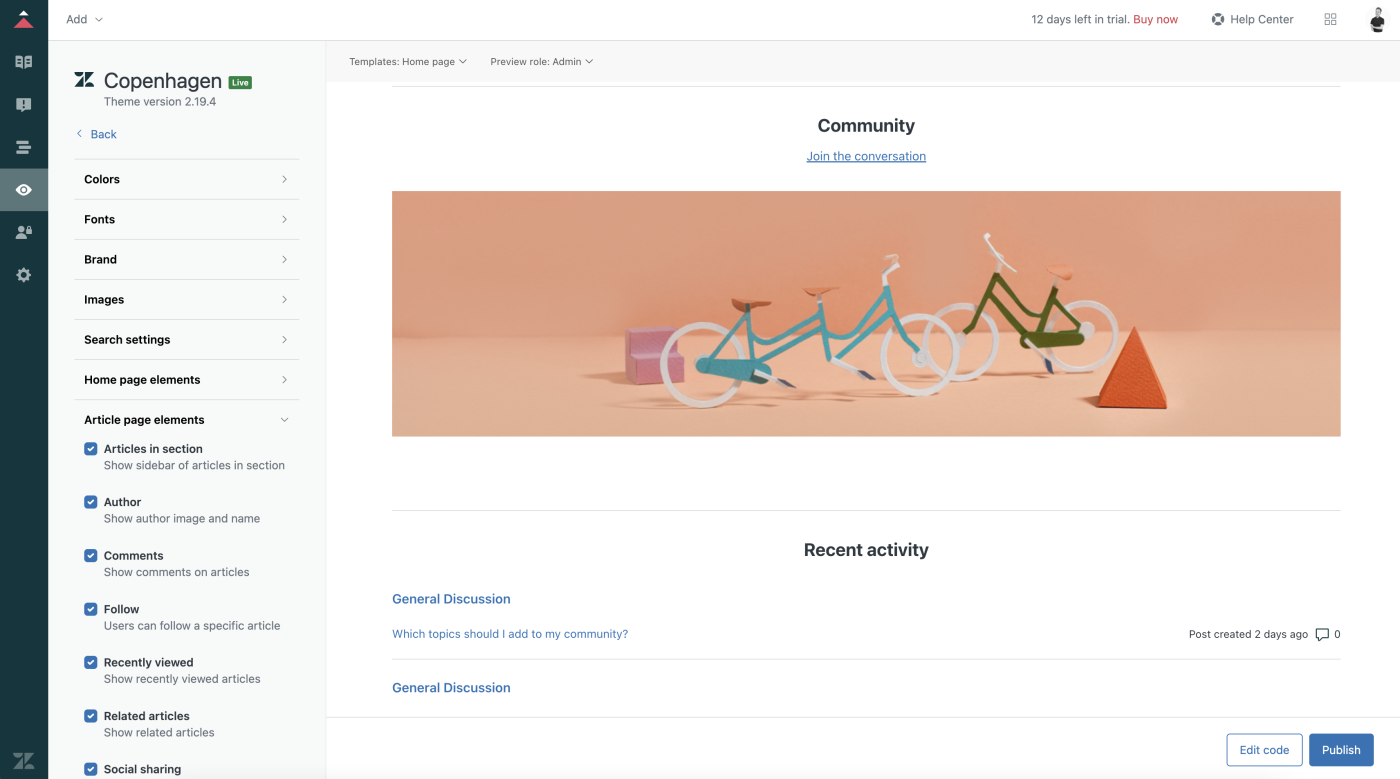
On the other hand, if I had to describe Zoho Desk's customization options in one word, it would be basic. This feels a bit odd since Zoho offers extensive customization options in other parts of the ecosystem. For example, Zoho Desk lacks native chatbots, but they can be integrated through Zoho SalesIQ. Separate tool with a separate price tag (although there is a free plan).
If you want a lot of customization in Zoho Desk, you'll have to be a user of the broader ecosystem. Otherwise, you might be out of luck.

Zoho also offers a limited number of customization options to make your help center visually appealing or to otherwise meet your users' needs. That said, I was impressed to find that it allows you to customize some of your knowledge base articles' SEO features like title tag and meta description—a feature Zendesk lacks. (Zendesk allows you to add internal search tags on each article, but nothing for Google or other major search engines.)

Zendesk's reports provide deeper customer support insights
Zendesk absolutely shines with its robust data and reporting options. Within the platform, you can meticulously track key customer support metrics across all channels—hello, omnichannel reporting!—alongside insights into areas like bot effectiveness and ticket escalation trends.
Plus, all of these valuable metrics are clearly plotted on charts and graphs in Zendesk Explore, where pre-built reports are updated daily, and Pro and Enterprise users can customize dashboards. You can even choose to download specific reports using the pop-up download button when you hover over elements like ticket type, or expand them to drill into data sources.

Zoho's dashboards aren't necessarily unhelpful or difficult to understand—in fact, I found them quite visually appealing. Powered by Zoho Analytics, they provide a broad overview of business data, leveraging over 50 visualization options like charts and pivot tables. Zoho Analytics also now offers AI-assisted reporting via Ask Zia, allowing users to generate reports using natural language queries.

The downside? Zoho's reports just aren't nearly as granular as Zendesk's when it comes to customer support metrics specifically, providing fewer insights than many customer service teams likely want to visualize. When it comes to top-level insights, however, they've more than got you covered.
Zendesk has more integrations, but both integrate with Zapier
Zendesk boasts over 1,900 apps and integrations for everything from time tracking to eCommerce, making it difficult to find something you can't do. Plus, Zendesk offers a local development tool (Zendesk Command Line Interface) for developers to create their own custom Zendesk apps.

While Zoho Desk doesn't offer as many third-party integrations (just over 1,000), you can integrate it with other tools in the Zoho suite and even build your own extensions to add custom functionality.
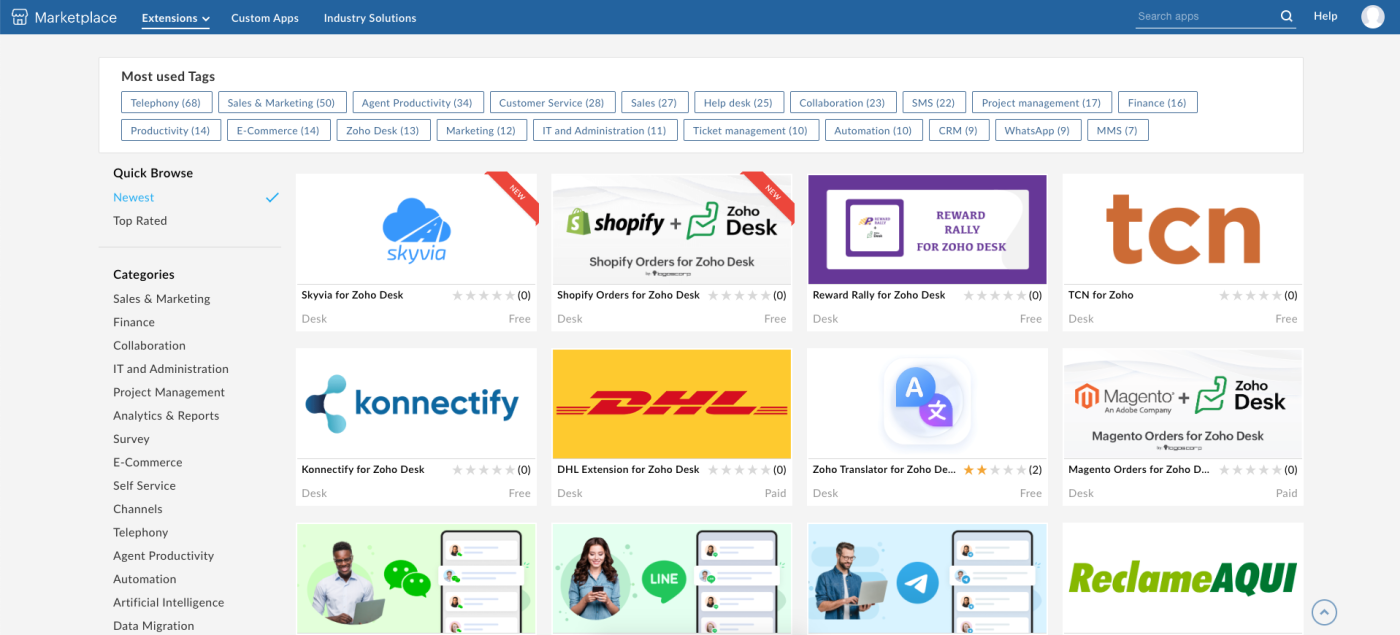
Plus, both Zendesk and Zoho Desk integrate with Zapier, so you won't have to worry about either option failing to cooperate with the other tools you use. Learn more about how to automate Zendesk, or get started with one of these pre-made templates.
Create a new Zendesk ticket automatically every week
Create tickets in Zoho Desk from new submissions in Jotform
Send a direct message on Slack about new Zoho Desk tickets
Zapier is the most connected AI orchestration platform—integrating with thousands of apps from partners like Google, Salesforce, and Microsoft. Use interfaces, data tables, and logic to build secure, automated, AI-powered systems for your business-critical workflows across your organization's technology stack. Learn more.
Zoho gives you more for less
Zendesk | Zoho | |
|---|---|---|
Free plan available? | No | Yes |
Support-only | Starts at $19/user/month | N/A |
Basic | Starts at $55/user/month | Starts at $7/user/month |
Mid-tier | Starts at $89 or $115/user/month | Starts at $14 or $23/user/month |
Enterprise | Custom | Starts at $40/user/month |
While Zendesk has added some cheaper options, Zoho is still significantly more accessible for a business on a budget.
For one thing, Zendesk doesn't offer a free plan (Zoho does). Plus, its plans get significantly more expensive than Zoho's. The lowest-priced Zendesk plan (which only covers foundational support for one agent, incidentally) costs $19/user/month (billed annually). Meanwhile, Zoho Desk's lowest plan costs $7/user/month (billed annually). And Zoho's enterprise plan is less than than even Zendesk's "Basic" plan—I think that says a lot.
Zendesk also charges even more on top for some of its added advanced features. For example, only a couple dozen themes are free—the rest you have to purchase through their marketplace. Some of them even hit over $1,000. While I couldn't dream of spending that much on a template, hey—to each their own. And that amazing AI experience? You'll need an advanced plan with a $50 add-on to access it.

Zendesk vs. Zoho: Which should you choose?
In the end, the decision between Zendesk and Zoho Desk is probably going to come down to budget. If a highly intuitive user interface, deep customization options, and access to a vast marketplace of nearly 2,000 app integrations is a priority, and cost is less of a barrier—then Zendesk may be the droid you've been looking for.
On the other hand, if you're more of a small to medium-sized business and cost-effectiveness is very much an issue, Zoho Desk is a perfectly serviceable customer service software with a full suite of customization and integration options—and it'll save you a massive amount of money.
Take a look at how Zendesk stacks up to similar apps in our showdowns: Zendesk vs. Freshdesk, Zendesk vs. Intercom, Zendesk vs. Jira, and Zendesk vs. Salesforce.
Related reading:
This article was originally published in April 2023 and has since had contributions by Abigail Sims. The most recent update was in May 2025.
